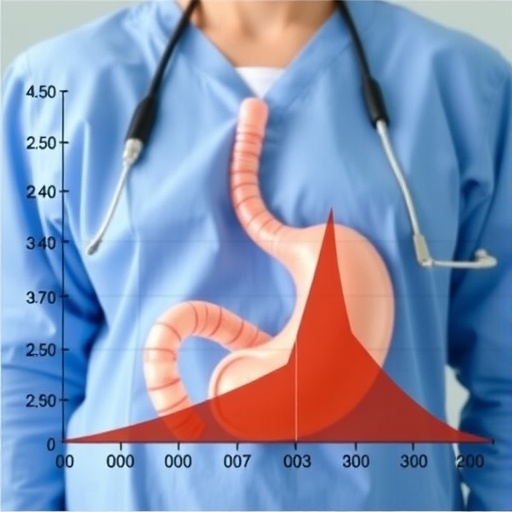The first study in the world to take a detailed look at scar tissue in human pancreatic cancer has revealed a range of different scar tissue types that could help clinicians predict which patients will respond best to particular treatments
The research, led by Queen Mary University of London, The Institute of Cancer Research, London, Beaujon University Hospital (INSERM), Paris, and Barts Health NHS Trust, could lead to tailor-made treatments, including immunotherapies, which target the powerful scar tissue wall that protects the cancer and makes it such a difficult disease to treat.
Co-lead researcher Professor Hemant Kocher from Queen Mary University of London and Barts Health NHS Trust, said: “We are excited to uncover new potential targets for treatment of patients with pancreatic cancer. Scar tissue is a huge barrier in treating pancreatic cancer, where it can form up to 90 per cent of the tumour volume, but it is still so poorly understood.
“Our ongoing mission is to fully understand how the scar tissue influences cancer behaviour so that we can develop more effective treatments for patients with this disease, where sadly very few are successful.”
Each year around 9,800 people in the UK are diagnosed with pancreatic cancer. Scar tissue is a particular problem in the disease, where it forms the largest proportion of tumour volume out of any type of cancer.
The intense scar tissue forms a protective wall around the cancer, hampering treatments including chemotherapy, immunotherapy or radiotherapy. This contributes to it being a particularly aggressive disease, with the lowest survival rate of all cancers – fewer than five per cent of patients survive for five years or more.
By looking at pancreatic cancer samples from 16 patients in the UK, Germany and Australia, and 50 surgically resected tumours from France, the study, published in the Journal of Pathology, now shows that there are at least four different types of scar tissue, and each may influence the cancer in a different manner.
Co-lead researcher Dr Anguraj Sadanandam, Team Leader in Systems and Precision Cancer Medicine at The Institute of Cancer Research, London, said: “We used complex computational analysis to look at the dense scar tissue that makes pancreatic cancer so difficult to treat.
“Identifying the four types of scar tissue in our new study will help us better understand how scar tissue and tumour cells interact in pancreatic cancer, and offers new insights into how to tackle this devastating disease.
“Our work could help pave the way for new personalised medicines, so that in future, people with pancreatic cancer could be offered those treatments most likely to work for them.”
There are early indications that one of the four types of scar tissue may be particularly attractive to immune cells – the cells that fight infections – so future work may look into whether patients with this scar tissue type could potentially from benefit from immunotherapy.
Finding which type of scar tissue is predominant in a patient may indicate to clinicians which patients will do well with treatment and which will not. The work paves the way for researchers to develop new treatments which are tailor-made for a particular patient.
###
This work was carried out as part of Cindy Neuzillet’s PhD studies. The work was funded by grants from the Fondation pour la Recherche Médicale (FRM), the French National Society of Gastroenterology (SNFGE), the ARCAD Foundation, and the French Pancreatic Club (CFP) and also supported by the NIHR Biomedical Research Centre at The Royal Marsden Hospital and the ICR and Cancer Research UK.
For more information, please contact:
Joel Winston
Public Relations Manager (School of Medicine and Dentistry)
Queen Mary University of London
[email protected]
Tel: +44 (0)20 7882 7943 / +44 (0)7970 096 188
Notes to the editor
* Research paper: ‘Inter? and intra?tumoral heterogeneity in cancer?associated fibroblasts of human pancreatic ductal adenocarcinoma’. Cindy Neuzillet, Annemilaï Tijeras?Raballand, Chanthirika Ragulan, Jérôme Cros, Yatish Patil, Matthieu Martinet, Mert Erkan, Jörg Kleeff, Jeremy Wilson, Minoti Apte, Marie Tosolini, Abigail Shirley Wilson, Francesca Romana Delvecchio, Corinne Bousquet, Valérie Paradis, Pascal Hammel, Anguraj Sadanandam and Hemant M Kocher. Journal of Pathology. https:/
About Queen Mary University of London
Queen Mary University of London is a world-leading research-intensive university with over 25,000 students representing more than 160 nationalities.
A member of the prestigious Russell Group, we work across the humanities and social sciences, medicine and dentistry, and science and engineering, with inspirational teaching directly informed by our research.
In the most recent exercise that rated research in the UK, we were ranked 5th in the country for the proportion of research outputs that were world-leading or internationally excellent. We offer more than 240 degree programmes and our reputation for excellent teaching was rewarded with a silver in the 2017 Teaching Excellence Framework (TEF) awards.
Queen Mary’s history dates back to 1785, with the foundation of the London Hospital Medical College. Our history also encompasses the establishment of the People’s Palace in 1887, which brought accessible education, culture and recreation to the East End of London. We also have roots in Westfield College, one of the first colleges to provide higher education to women.
Media Contact
Joel Winston
[email protected]
44-020-788-27943
http://dx.




